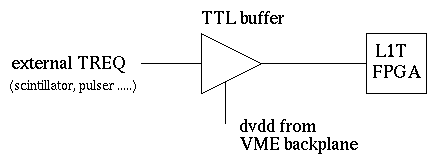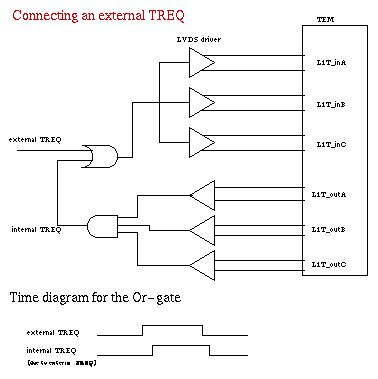
| Name | Pin |
|---|---|
| EXT_TREQ | P8, 15 |
| CAL_TREQ | P6, 16 |
| ADCH_TREQ | P8, 9 |
In order to protect the FPGA, we are using a TTL buffer that obtains it's power from the VME backplane.

Instead of using the external TREQ one could use the L1T input. The following figure shows how to connect the external TREQ to the L1T input. It also connects the internal generated TREQ (L1T_out) so that one could still use TREQ's generated withhin the TEM (software trigger, calib strobe, self trigger).
The External TREQ has to be at least two clock cycles wide. Also if a scheme is used as shown the external TREQ shows up also at the L1T_out output and feeds back into the Or-gate. Therefore the external TREQ has to be long enough so that it is still active when it feeds back to the Or-gate (see figure below). Typically a 1-2 mus wide signal is used. The TEM uses active low state logic for the lvds signals. If the output is in the high state (output+ > output-) it is a logic zero. (??)
